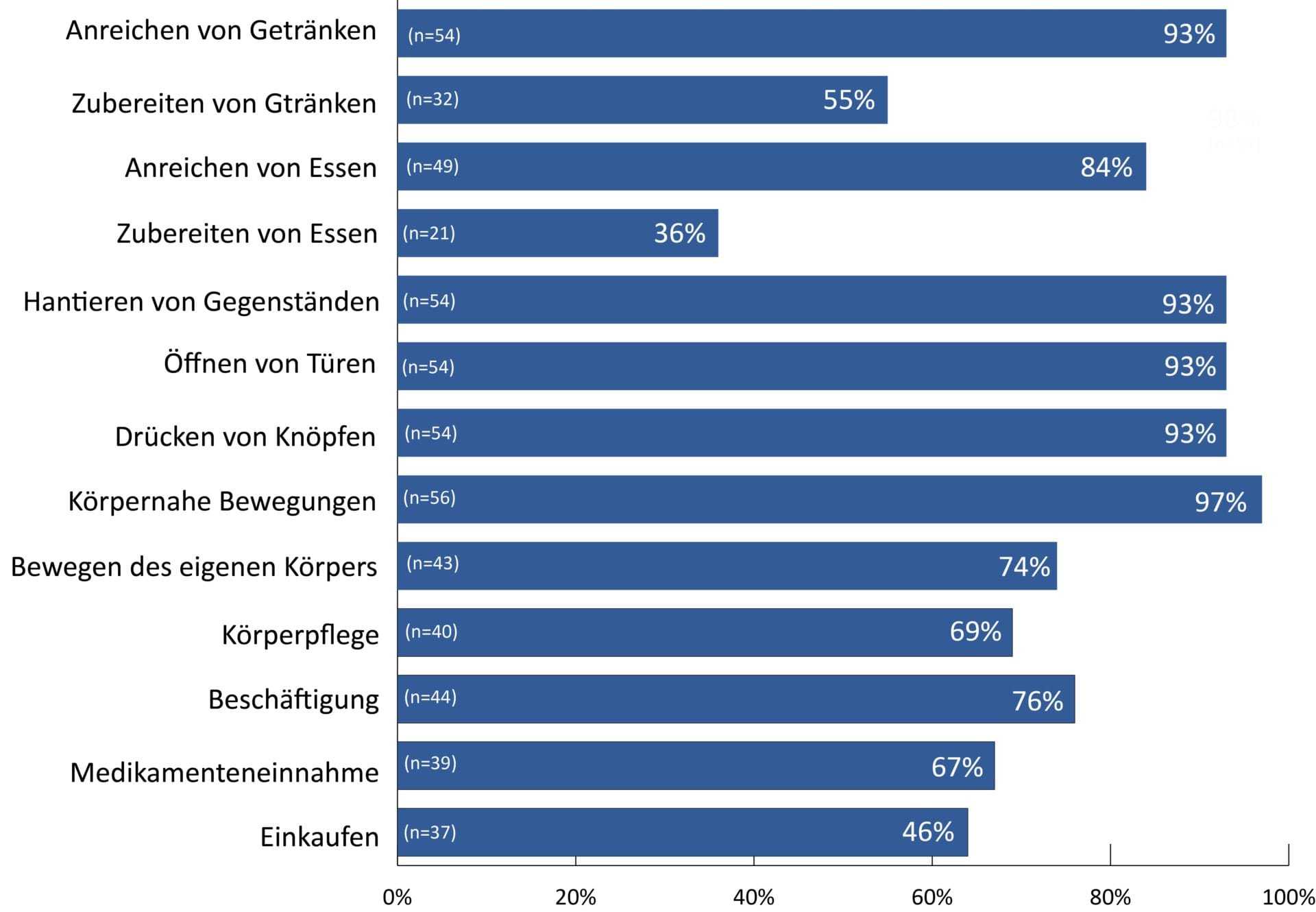People with amyotrophic lateral sclerosis (ALS) suffer from progressive paralysis of the arms and hands. As a result, the arms and hands lose their functions and motor independence is severely restricted. With a robotic arm, a new assistive technology device (ATD) is available that can partially compensate for the disease-related loss of function.
APST supports a scientific study that systematically records and analyses the expectations of a robotic arm in people with ALS. The results of the study were presented at this year's congress of the German Society of Neurology in early November.
The study analysed 58 patients with ALS (men: 69%, n=40; women: 31%, n=18) who received a medical prescription for a robotic arm. The ALS Functional Scale (ALS-FRS) showed a high motor impairment of the arms in these people.
Use and possibility of fixing the robot arm
The majority of patients (93%) would use the robotic arm both during the day and at night. 7% of patients exclude themselves from using the arm during the day Fixation of the robotic arm is planned on the wheelchair (98%, n=57), on the table (52%, n=30) or on the bed (35%, n=20). The meaning of the fixation options is shown in the figure.
Figure: Planned fixation of the robot arm. n=58
Figure: Meaning of the fixing options of the robot arm. n=58
Expectations for the supply with a robot arm
More than 90% of patients would use the robot arm for movements close to the body (e.g. scratching or wearing glasses), for serving drinks, handling objects, opening doors or cupboards and pressing buttons (e.g. light switch or lift). Further expectations regarding the benefits are shown in the following figure.

Figure: Meaning of the fixing options of the robot arm. n=58
Importance of supply as a whole
Overall, 95% of all patients consider the use of a robotic arm to be very important.

Figure: Importance of the overall supply. n=58
Robot arm is a very important tool
The possibility of using a robotic arm is considered very important by almost all patients (95%). At the same time, 85% of the ALS patients surveyed show severe restriction of the upper extremities. The possibility of wheelchair fixation is desired by almost all patients (98%). Drinks, movements close to the body such as scratching, handling objects, opening doors and pressing buttons represent the greatest patient expectations.
The supply of a robotic arm is currently subject to an individual procedure of cost absorption by the health insurance company. The actual care rate as well as the acceptance and satisfaction with a robotic arm from the patient's perspective is being investigated by us in ongoing research.
Thanks for data donation
We would like to thank all patients who participated in this robotics study and made their data available for research. The research project could only succeed due to their patient support and data donation.
Your contact for questions regarding the study and the robotic arm:
Dr. Dr. Susanne Spittel
Project manager medical research
mail: susanne.spittel@ambulanzpartner.de
Phone: 030 81031410
The study was conducted at the following ALS centres:
- Charité – Universitätsmedizin Berlin, Ambulanz für ALS und andere Motoneuronerkrankungen
- Berufsgenossenschaftliches Universitätsklinikum Bergmannsheil, Ambulanz für ALS und andere Motoneuronerkrankungen
- Universitätsklinikum Jena, Zentrum für neuromuskuläre und Motoneuron-Erkrankungen
- Alfried Krupp Krankenhaus Essen, Ambulanz für ALS und andere Motoneuron-Erkrankung
- Universitätsklinikum Bonn - Klinik für Neurodegenerative Erkrankungen
- Universitätsklinikum Halle (Saale) - Neurologische Ambulanz.
